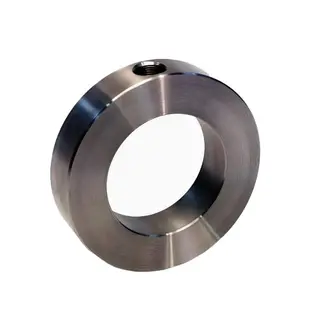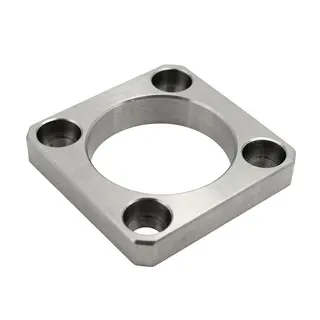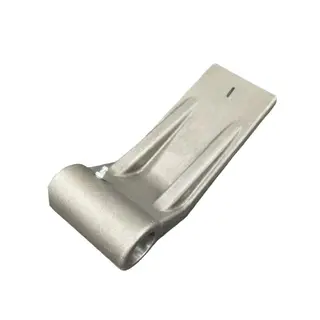In modern manufacturing, as people's demands for production efficiency, product quality, and environmental protection continue to increase, traditional metal processing methods are gradually revealing certain shortcomings. Cold forging technology, as an emerging processing method, is gaining more and more attention and favor from enterprises due to its advantages of high efficiency, eco-friendliness, and high precision. This article will provide a detailed introduction to the principles, advantages, applications, and considerations during implementation of cold forging technology, helping readers gain a comprehensive understanding of this advanced metal processing technique.
Cold forging is a metal forming process carried out at room temperature. Unlike hot forging, cold forging does not involve heating the metal to high temperatures, but instead uses the plastic deformation of the metal under ambient conditions to achieve shaping. This method usually produces excellent surface finish, increased strength due to work hardening, and higher dimensional accuracy. Cold forging shapes materials through deformation, so it generates almost no metal waste during manufacturing, achieves high material utilization, enables high-precision and high-speed processing, and is considered an "eco-efficient and rational" processing technology.
As an advanced metal processing technique, cold forging has many significant advantages, which make it highly favored in modern manufacturing. The main advantages are as follows:
Cold forging forms materials through deformation, generally using an amount of material close to the weight of the finished product. This achieves high material utilization and greatly reduces material costs. In traditional hot forging or machining, a large amount of metal waste is often generated, which not only wastes raw materials but also increases the cost of waste disposal. Cold forging generates almost no waste, which for enterprises means a significant reduction in raw material costs. This advantage is particularly evident in large-scale production, where cost efficiency is greatly enhanced.
Because cold forging is carried out at room temperature without heating the metal, dimensional changes are minimal, and even very complex shapes can be machined with high precision. Cold forging technology can achieve high-speed production of approximately 100 pieces per minute, which is important for improving production efficiency and meeting market demand. For example, in automotive components, electronic components, and other fields, many complex parts require high-precision processing, and cold forging technology can meet these requirements very well.
Cold forging technology is called an "eco-efficient and rational" processing method because it does not require heating the metal, saving a large amount of energy. In traditional hot forging, heating the metal consumes substantial fuel or electricity, which not only increases production costs but also pollutes the environment. Cold forging avoids this problem, aligning with the modern manufacturing requirements for environmental protection and energy conservation.
During cold forging, the metal material undergoes work hardening, which increases its strength and wear resistance. By considering fiber flow lines in process design, parts with excellent strength and wear resistance can be produced. This is very important for components that need to withstand high loads and high wear, as it can extend the service life of the parts and reduce the frequency of maintenance and replacement.
The implementation of cold forging technology includes several key steps, each of which has an important impact on the quality and performance of the final product. The detailed steps are as follows.
The first step of cold forging technology is to select suitable materials that can withstand the stress of cold forging. Commonly selected materials include steel, aluminum, and copper. These materials have good plasticity and certain deformability, which meet the requirements of cold forging. For example, iron is a commonly used cold forging material with good hardness and elasticity, suitable for large-scale production. Stainless steel is also a commonly used cold forging material; with chromium content over 10.5%, it has good corrosion resistance, and products made from it have a long service life.
Before forging, the workpiece is usually lubricated to reduce friction and wear on the die and to facilitate material flow. Lubrication is a very important part of cold forging technology. It can improve die life, reduce energy consumption during processing, and also help improve the surface quality of parts.
Creating custom dies to shape the workpiece is a key step in cold forging technology. These dies must be made from materials harder than the workpiece to withstand the pressure of cold forging. The design and manufacture of dies require precise calculation and processing according to the shape and size of the part to ensure the quality and accuracy of the parts.
The metal workpiece is placed between the dies, and a press (usually a mechanical press or hydraulic press) applies a rapid and powerful impact to deform the workpiece into the shape of the die cavity. Depending on the complexity of the part, multiple forging operations may be required, which may involve different sets of dies for different stages of pressing.
Any excess material, such as flash generated during forging, is trimmed. Other finishing processes, such as shot peening, cleaning, or heat treatment (to relieve stress), may also be performed. These post-processing operations further improve the quality and performance of the parts.
Cold forging technology encompasses a variety of specific processes, each with its own characteristics and applications. The following are some common cold forging processes.
Precision forging is a method of shaping material by compressing it in a die cavity with a central opening, forming the material into a shape with a diameter larger than the original. In impression die forging, the outer periphery is unconstrained, making it difficult to produce complex shapes. Therefore, it is used for simpler cases, such as forming a rod into a disc. If the impression ratio is too high, problems such as workpiece ejection may occur, requiring multiple operations. Generally, the standard is below 85%; exceeding this requires segmented operations and additional dies.
Backward extrusion is a process in which the material moves in a direction opposite to the punch movement. Material is extruded backward relative to the direction of the punch. This method can be used to produce specific part shapes, such as tubular components.
Forward extrusion is a process in which material is pushed into a smaller die to reduce the diameter, thereby reducing the cross-sectional area. Forming high-hardness materials like stainless steel may be difficult, but it can still be used in certain cases.
Die forging is a process in which the desired shape is formed into the die by placing the workpiece and forging it into the die cavity. The material slightly increases in volume to fill the die cavity, producing excess material called flash on the exterior of the final shape, which is removed in subsequent processes. Die forging can produce parts with complex shapes and high dimensional accuracy.
Although cold forging technology has many advantages, there are also some limitations in practical applications. First, cold forging requires dies, which involve initial costs and lead time for die manufacturing. Second, preparation work in the process requires time and cost, making cold forging less suitable for small-batch production. In addition, the process and die design require certain professional knowledge and experience, which increases the difficulty. Finally, cold forging has some limitations in surface processing, such as restrictions on corner radii.
Due to its advantages of high efficiency, precision, and eco-friendliness, cold forging technology is widely used in multiple industries. The main application areas include:
The automotive industry is one of the main application areas of cold forging. Many automotive parts, such as engine components, transmission components, and steering system parts, require high precision, high strength, and high wear resistance. Cold forging can meet these requirements while reducing production costs and improving efficiency. For example, key engine components such as connecting rods and crankshafts can have increased strength and reliability through cold forging, extending their service life.
In the electronics industry, many small and high-precision parts need processing, such as electronic connectors and miniature gears. Cold forging can produce these parts with high precision and efficiency, meeting the trend of miniaturization and high performance in electronic devices. For instance, miniature gears and connectors in mobile phones can achieve precise forming through cold forging, ensuring proper device operation.
The aerospace industry has extremely high requirements for the quality and performance of parts. Cold forging can produce high-strength, high-precision components to meet these needs. For example, critical components of aircraft engines, such as turbine blades and shafts, can have enhanced strength and reliability through cold forging, ensuring flight safety.
In machinery manufacturing, cold forging can be used to produce various mechanical components, such as gears, bearings, and shafts. These parts require high precision and wear resistance, which cold forging can effectively provide. For example, gears and shafts in machine tools can have improved precision and strength through cold forging, enhancing the performance and service life of the machinery.
Cold forging technology, as an efficient, eco-friendly, and high-precision metal processing method, has broad application prospects. It not only improves production efficiency and reduces costs but also enhances the quality and performance of parts, meeting the modern manufacturing demands for high-quality, high-performance, and environmentally friendly production. Although there are some limitations in the implementation of cold forging, with continuous technological progress and evolving market demands, these issues will gradually be resolved.
In summary, cold forging technology is an advanced metal processing technique worthy of promotion and application. For enterprises, adopting cold forging not only enhances competitiveness but also contributes to sustainable development. This article aims to help readers gain a better understanding of cold forging technology and promote its wider application and development in various fields.



